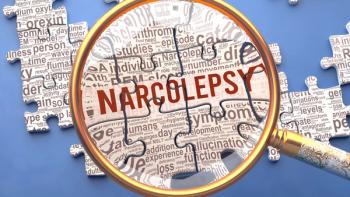
- MHE April 2020
- Volume 30
- Issue 4
Five Ways to Motivate Your Team
Clinicians at UMass Memorial Health Care recommend strategies to better motivate team members, transform care delivery and save lives.
They say healthcare is a team sport, but teams can sag, get discouraged, lose focus, and stop functioning as, well, a team. Anyone in a leadership position must stay attuned to how the team members are feeling and keep people motivated. Keeping your team motivated and maintaining enthusiasm requires attention, creativity, and planning.
Here are five examples of how healthcare organizations have worked to keep motivation high:
Turn in, turn on the bright ideas
UMass Memorial Health Care, in Worcester, Massachusetts, uses the “idea system” to motivate teams to transform care delivery and save lives. For example, the neonatal intensive care unit’s (NICU) pharmacy team wanted to reduce the time it took to provide antibiotics to its most vulnerable patients. The changes included streamlining the process for a clinician to order an antibiotic and having it verified and prepared by a pharmacist. As a result of the NICU pharmacy team’s work, the time to get critical medications to sick infants dropped from 75 minutes to 53. Since the idea system started six years ago, team members at UMass Memorial have submitted more than 78,000 ideas, says Eric W. Dickson, MD, president and CEO.
Rest and recharge with team members
Kelly M. Johnson, PhD, RN, NEA-C, former vice president of patient care services and chief nursing officer at Stanford Children’s Health in Palo Alto, California, brings together members of the patient care services team at the end of the fiscal year at a retreat to reflect, recharge, and connect. “We share and celebrate accomplishments in the division and solidify priorities for the coming year. More importantly, the time is critical for team building, self-care, and reflection on the important work we do,” says Johnson, who’s also chief nursing officer at the hospital, which provides pediatric and obstetric care in the San Francisco Bay area.
She acquired a new position in March 2020 as vice president, chief nursing officer, UCSF Benioff Childrens Hospital, ACNO, UCSF Health at the University of California, San Francisco.
Related:
Recognize team members’ triumphs
Cigna finalized its acquisition of Express Scripts in December 2018. During the integration, the company featured a “Thursday Thank You” segment on its intranet to celebrate team members’ successes, says Kristen Gorodetzer, senior vice president of total rewards, talent acquisition, and employee services at Cigna. The intranet posts focused on a different team each week and garnered significant engagement because “people want an opportunity to say thank you to pat each other on the back,” says Gorodetzer.
Use team huddles to solve problems
Patients calling to schedule appointments with UMass Memorial’s call center were waiting an average of 11 minutes, up from between 40 to 50 seconds. That spike in wait time was driven by the healthcare system’s electronic health record implementation, says Dickson. He credits a dedicated leader on the call center team with using daily team huddles to sustain team members’ enthusiasm for streamlining the call greeting, activating an auto-answer feature to remove the 18-second ring cycle, and shortening the prerecorded appointment information.
The end result is that the average call wait is now 5.6 seconds; it has been maintained by continuing to meet daily, review metrics five times a day, and provide training when necessary.
Add the fun factor
Sujata Sanghvi, deputy chief financial officer at AllWays Health Partners, a Somerville, Massachusetts, not-for-profit payer, says recognition of employee success is crucial.
“It’s not only important for leaders to recognize their teams but also to encourage their teams to recognize each other,” she says. Sanghvi has a few ideas to make it fun: tie it to a reward, a raffle, even a silly rotating “trophy” to highlight the recognition.
“By integrating opportunities like these into your regular practices, you can help create a sense of camaraderie to build a high-performing team that takes pride in their work and can depend on one another,” she says.
Aine Cryts is a writer based in Boston.
Articles in this issue
over 5 years ago
These Are Boom Times for MAover 5 years ago
Patients in Observation Statusover 5 years ago
How to Know if This Promotion Is Right for Youover 5 years ago
Satisfying Patient Needs Across the Generationsover 5 years ago
Ten Habits That Lead To Successover 5 years ago
Top 8 Healthcare Business Trendsover 5 years ago
Basu Takes the Reins at CTCAalmost 6 years ago
Diabetes: The Quiet Epidemic That Is Not Going Awayalmost 6 years ago
Six Tips for Supporting, Connecting WFH Employeesalmost 6 years ago
Use of Telehealth Services Increases Amid PandemicNewsletter
Get the latest industry news, event updates, and more from Managed healthcare Executive.






















































